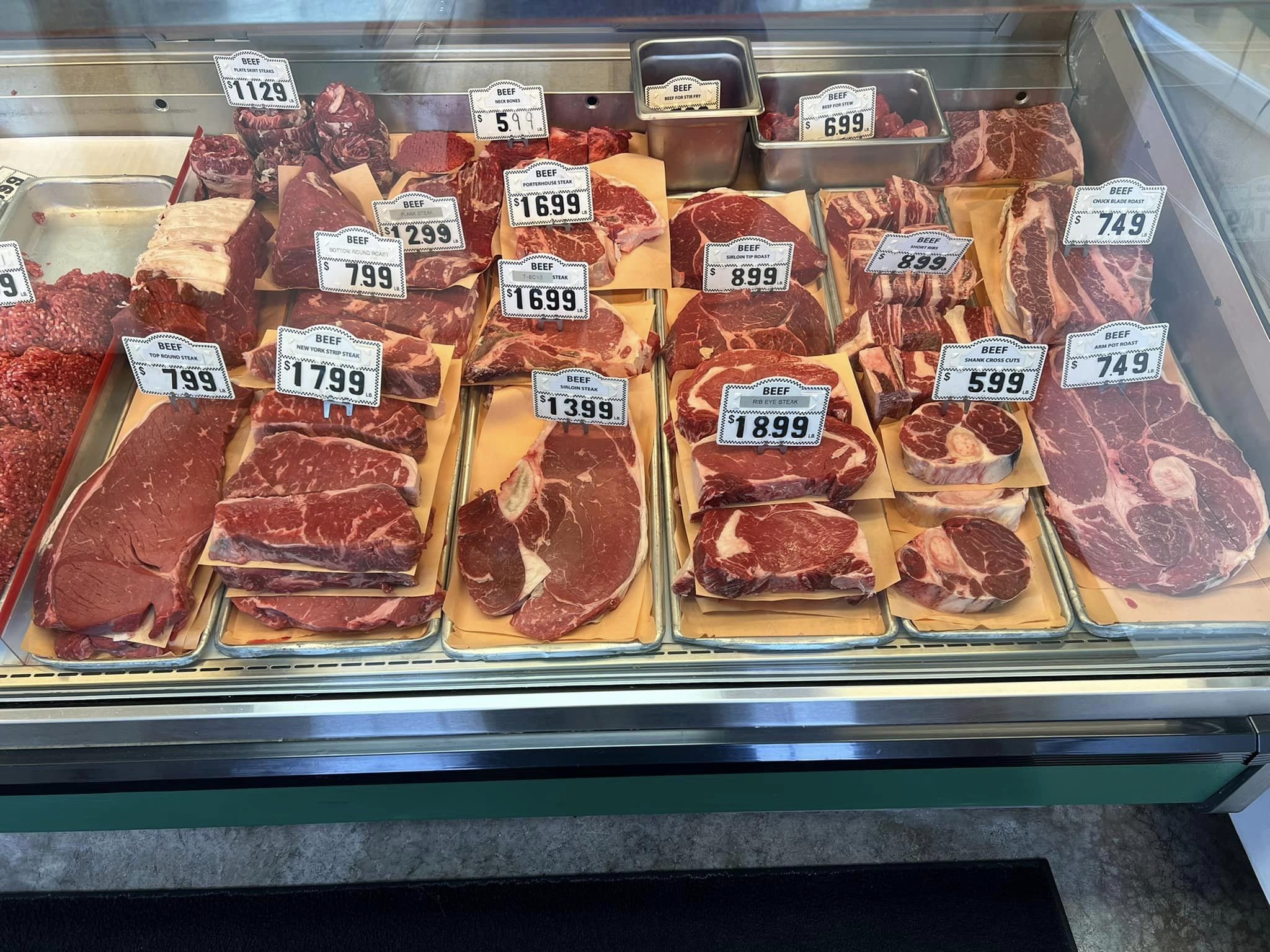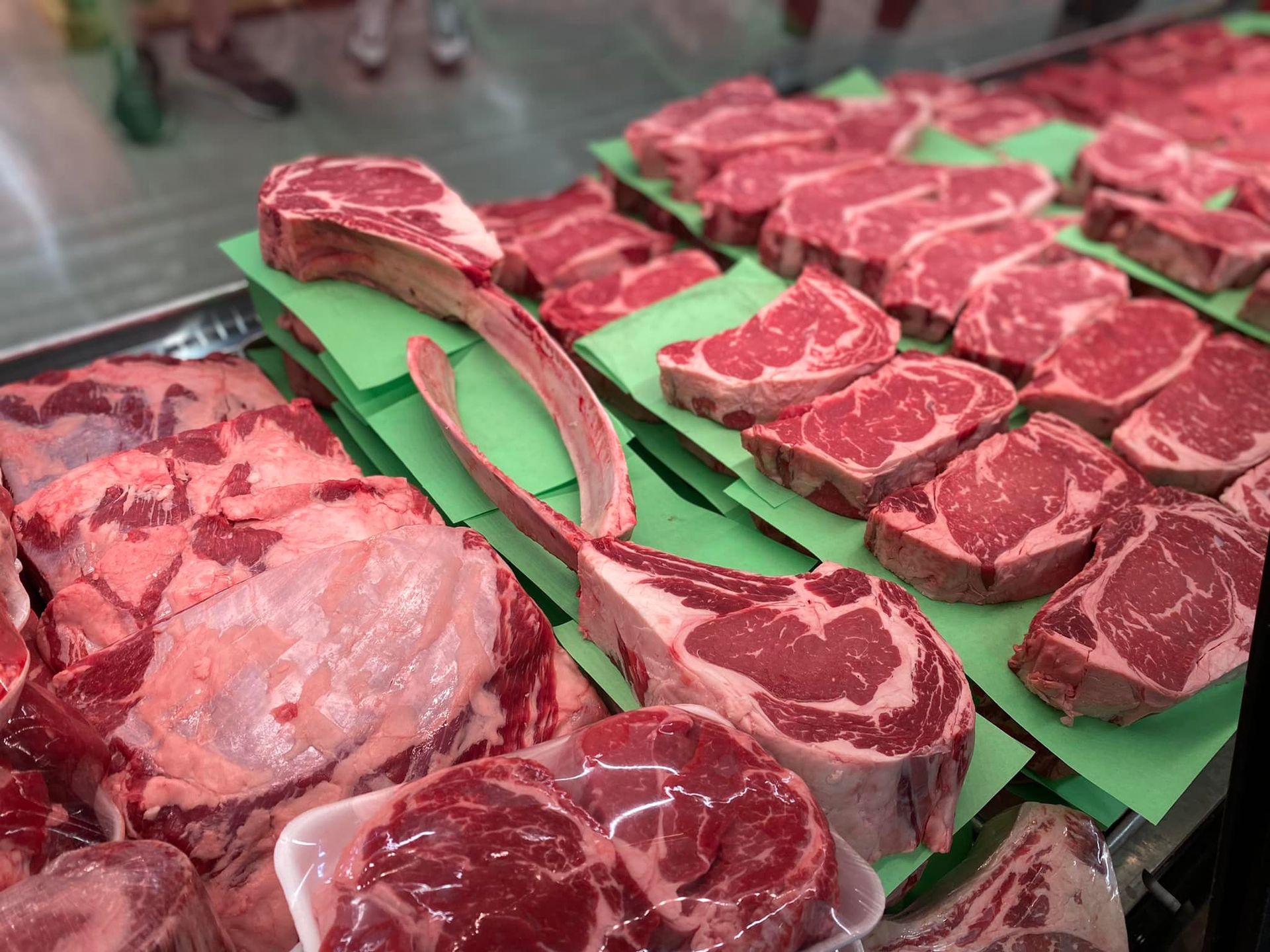Why Bagley Farms Meat Market Edwardsville IL Is the most effective Option for Quality Meats
Why Bagley Farms Meat Market Edwardsville IL Is the most effective Option for Quality Meats
Blog Article
Discover the Art of the Butcher's Cut in a Modern Meat Market
In the ever-evolving landscape of modern-day meat markets, the butcher's cut has actually transcended its conventional origins, merging olden craftsmanship with modern techniques. What really establishes the modern-day butcher apart is their capability to build a deeper connection between customers and the origins of their meat.
Development of Butchery Strategies
The evolution of butchery strategies shows an abundant tapestry of innovation and adaptation driven by advancements in innovation, adjustments in customer need, and a much deeper understanding of meat scientific research. Historically, butchery was a craft passed down via generations, with techniques refined over centuries to make the most of yield and flavor. The commercial revolution ushered in automation, transforming conventional methods and enabling large handling.
The mid-20th century saw butchery techniques further fine-tuned by scientific understandings right into muscle mass biology and meat aging, enhancing both tenderness and preference. Advancements like vacuum cleaner packaging and refrigeration expanded item shelf-life, allowing butchers to diversify offerings and enhance top quality control. This period also marked the rise of specific devices, such as band saws and meat slicers, which boosted accuracy and efficiency in meat processing.

The 21st century has introduced digital technology into the butchery realm. Digital systems now aid in tracking animal provenance and enhancing cuts to satisfy particular customer preferences. Additionally, a revival in artisanal butchery has arised, mixing standard skills with modern knowledge to deal with consumers seeking moral and lasting meat alternatives. This advancement highlights a vibrant interaction in between custom and advancement, meeting modern demands while preserving the craft's heritage.
Understanding Meat Cuts
Comprehending the complexities of meat cuts is vital for both butchers and consumers looking for high quality and worth. Each cut comes from a various part of the pet, passing on one-of-a-kind tastes, textures, and food preparation methods - bagley farms meat market edwardsville il. Mastery of these distinctions not only boosts culinary experiences but additionally optimizes the utility of each carcass. For butchers, exact cuts reflect skill and regard for the craft, ensuring very little waste and optimum yield.

Understanding muscle make-up is critical; muscle mass utilized more regularly by the pet have a tendency to be harder and are best suited for slow-moving food preparation methods, while less-used muscular tissues, like like this those found in the loin, are extra tender and suitable for cooking or roasting. Knowledge with these distinctions empowers customers to make enlightened choices, boosting their culinary undertakings.
Picking Top Quality Meat
Picking the best meat entails even more than just choosing an aesthetically enticing item from the display. The art of choosing high quality meat calls for a critical eye and knowledge of particular features that signify freshness and excellence.
Secondly, consider the marbling, which refers to the white flecks of fat within the muscle mass. Correct marbling is a vital indicator of tenderness and flavor, as it melts during food preparation, enhancing the meat's juiciness. Remember, higher marbling commonly associates with exceptional top quality cuts, such as USDA Prime.
Texture is another crucial element; meat must really feel solid to the touch, not slimed or excessively soft. Furthermore, bear in mind the aroma. Fresh meat should have a tidy, neutral odor, free from any sour or off-putting smells.
Combining Cuts With Cooking Techniques

On the other hand, tougher cuts like brisket and chuck roast are abundant in collagen, which damages down right into gelatin when cooked slowly. These cuts are excellent for braising or slow roasting, enabling the meat to soften over time and create deep, intricate tastes. Cuts such as short ribs and pork shoulder get on well with slow-cooking techniques, where prolonged cooking times change more tips here their durable textures into succulent dishes.
Lamb shanks and oxtail, which require prolonged cooking to tenderize, are perfect candidates for cooking or slow-moving simmering. These approaches coax out abundant, passionate tastes while preserving wetness. By comprehending the special features of each cut, cooks and home cooks alike can elevate their culinary creations, ensuring each dish is both satisfying and remarkable.
The Butcher's Function Today
Browsing the developing landscape of the modern-day meat market, the butcher's function today expands beyond simple preparation of cuts. Contemporary butchers are culinary craftsmens, educators, and advocates for lasting practices.
Along with crafting exact cuts, butchers now involve directly with clients, supplying cooking guidance and customizing selections other to fit specific needs and preferences. Their know-how in meat aging, marbling, and flavor profiles equips consumers to make educated decisions, improving their cooking experiences. This individualized solution exemplifies the butcher's progressing duty as a trusted expert in the kitchen area.
In addition, butchers are pivotal in reducing waste, using entire pets to develop diverse items such as sausages and stocks. This detailed strategy not just respects the animal however likewise lines up with modern sustainability objectives. By doing this, the contemporary butcher personifies both practice and innovation, adapting to an ever-changing market while preserving the creativity and stability of their craft.
Final Thought
Mastery in understanding diverse meat cuts and quality indicators empowers butchers to supply educated suggestions, lining up specific cuts with optimum food preparation approaches. By recognizing historical practices while welcoming modern demands, the butcher's role continues to be important in today's sophisticated meat market.
Report this page